Louisiana’s Isle de Jean Charles losing battle to sea level rise
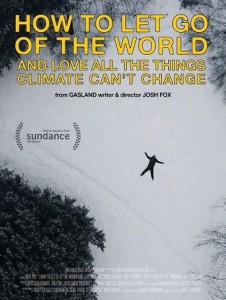 In April, the 6th Annual Fort Myers Film Festival screened a documentary titled How to Let Go of the World and Love All the Things Climate Can’t Change. In it, filmmaker and environmental activist Josh Fox included footage of several South Pacific islands that are losing shoreline and entire villages to sea level rise. Just a couple of weeks after the Film Festival’s close, the world learned that five tiny islands in the Soloman Archipelago have disappeared amid rising seas and erosion. Then last month UNESCO warned that projected sea level rise threatens Venice, Italy, the Sydney Opera House, the Galapagos Islands, Stonehenge, Easter Island and the Statue of Liberty. But most
In April, the 6th Annual Fort Myers Film Festival screened a documentary titled How to Let Go of the World and Love All the Things Climate Can’t Change. In it, filmmaker and environmental activist Josh Fox included footage of several South Pacific islands that are losing shoreline and entire villages to sea level rise. Just a couple of weeks after the Film Festival’s close, the world learned that five tiny islands in the Soloman Archipelago have disappeared amid rising seas and erosion. Then last month UNESCO warned that projected sea level rise threatens Venice, Italy, the Sydney Opera House, the Galapagos Islands, Stonehenge, Easter Island and the Statue of Liberty. But most 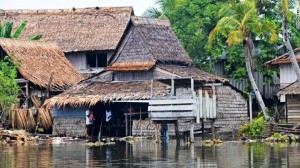 folks shrugged off these stories. After all, the Soloman Archipelago is too far away to be worried about and threats to the Statue of Liberty and other World Heritage sites is too speculative. But now we learn that the United States Department of Housing and Urban
folks shrugged off these stories. After all, the Soloman Archipelago is too far away to be worried about and threats to the Statue of Liberty and other World Heritage sites is too speculative. But now we learn that the United States Department of Housing and Urban 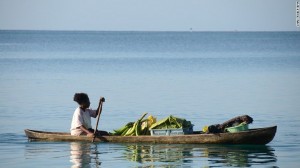 Development has issued a $48 million grant to relocate the residents of Isle de Jean Charles, which is quickly disappearing into the waters of the Gulf of Mexico on Louisiana’s southern coast.
Development has issued a $48 million grant to relocate the residents of Isle de Jean Charles, which is quickly disappearing into the waters of the Gulf of Mexico on Louisiana’s southern coast.
According to an article in the New York Times, the grant represents the first allocation of tax dollars 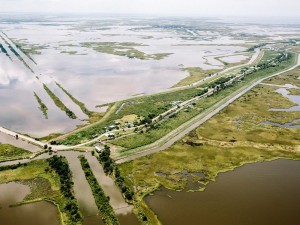 to move an entire community because of the impact of climate change. The island’s plight was the focus of the closing segment on tonight’s telecast of All in with Chris Hayes on MSNBC. “The divisions the effort has exposed and the logistical and moral dilemmas it has presented point up in microcosm the massive problems the world could face in the coming decades as it confronts a new category of displaced people who
to move an entire community because of the impact of climate change. The island’s plight was the focus of the closing segment on tonight’s telecast of All in with Chris Hayes on MSNBC. “The divisions the effort has exposed and the logistical and moral dilemmas it has presented point up in microcosm the massive problems the world could face in the coming decades as it confronts a new category of displaced people who 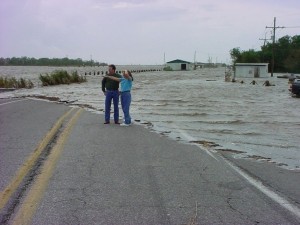 have become known as climate refuges,” writes New York Times correspondents Coral Davenport and Campbell Robertson. “Around the globe, governments are confronting the reality that as human-caused climate change warms the planet, rising sea levels, stronger storms, increased flooding, harsher droughts and dwindling freshwater supplies could drive the world’s most vulnerable people from their homes.”
have become known as climate refuges,” writes New York Times correspondents Coral Davenport and Campbell Robertson. “Around the globe, governments are confronting the reality that as human-caused climate change warms the planet, rising sea levels, stronger storms, increased flooding, harsher droughts and dwindling freshwater supplies could drive the world’s most vulnerable people from their homes.”
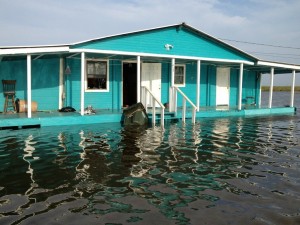 According to the United Nations University Institute for Environment and Human Security and the International Organization for Migration, between 50 and 200 million people could join Isle de Jean Charles and Pacific Islanders as climate refugees by 2050. Most of these are subsistence level farmers and fishermen.
According to the United Nations University Institute for Environment and Human Security and the International Organization for Migration, between 50 and 200 million people could join Isle de Jean Charles and Pacific Islanders as climate refugees by 2050. Most of these are subsistence level farmers and fishermen.
For over a century, the American Indians living on 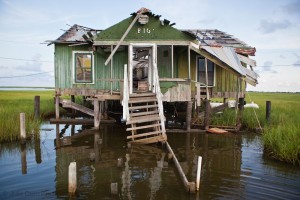 Isle de Jean Charles fished, hunted, trapped and farmed among the lush banana and pecan trees that once spread out for acres. But, as Chris Hayes reported this evening, more than 90 percent of the island’s original land mass has been washed away. Channels cut by loggers and oil companies eroded much of the island, and hurricanes such as Katrina, Rita and Gustav have also taken a heavy
Isle de Jean Charles fished, hunted, trapped and farmed among the lush banana and pecan trees that once spread out for acres. But, as Chris Hayes reported this evening, more than 90 percent of the island’s original land mass has been washed away. Channels cut by loggers and oil companies eroded much of the island, and hurricanes such as Katrina, Rita and Gustav have also taken a heavy  toll. “What little remains will eventually be inundated as burning fossil fuels melt polar ice sheets and drive up sea levels, projected the National Climate Assessment, a report of 13 federal agencies that highlighted the Isle de Jean Charles and its tribal residents as among the nation’s most vulnerable,” state Davenport and Robertson in their New York Times article.
toll. “What little remains will eventually be inundated as burning fossil fuels melt polar ice sheets and drive up sea levels, projected the National Climate Assessment, a report of 13 federal agencies that highlighted the Isle de Jean Charles and its tribal residents as among the nation’s most vulnerable,” state Davenport and Robertson in their New York Times article.
Not surprisingly, the few people still living on the island are reluctant to leave. There’s a matter of heritage. They grew up there. Their parents and grandparents grew up there. Scores of family members lie at rest in the town’s cemetery. Moreover, there’s the fear of the unknown. Where to they go, how will the be 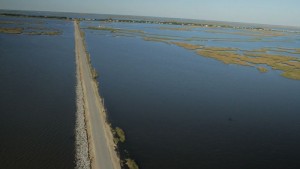 received and what will they do for work and school when they get there?
received and what will they do for work and school when they get there?
“This is not just a simple matter of writing a check and moving happily to a place where they are embraced by their new neighbors,” said Mark Davis, the director of the Tulane Institute on 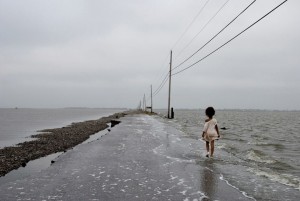 Water Resources Law and Policy. “If you have a hard time moving dozens of people,” he continued, “it becomes impossible in any kind of organized or fair way to move thousands, or hundreds of thousands, or, if you look at the forecast for South Florida, maybe even millions.”
Water Resources Law and Policy. “If you have a hard time moving dozens of people,” he continued, “it becomes impossible in any kind of organized or fair way to move thousands, or hundreds of thousands, or, if you look at the forecast for South Florida, maybe even millions.”
While pretty much everyone agrees that it’s too 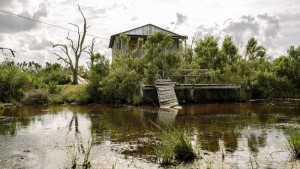 late to save Isle de Jean Charles, they’re not alone in facing the specter of land loss and flooding due to sea level rise. In January, the Department of Housing and Urban Development announced grants totaling $1 billion in 13 states to help communities adapt to climate change by building stronger levees, dams and drainage systems.
late to save Isle de Jean Charles, they’re not alone in facing the specter of land loss and flooding due to sea level rise. In January, the Department of Housing and Urban Development announced grants totaling $1 billion in 13 states to help communities adapt to climate change by building stronger levees, dams and drainage systems. 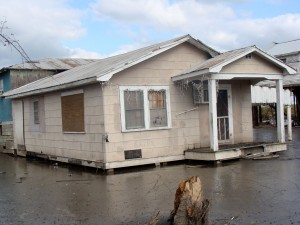 Within Florida, contends filmmaker Josh Fox, Miami and Sanibel, Pine Island, Matlacha Island, Fort Myers Beach and everything north and west of McGregor Boulevard, including all of downtown Fort Myers are critically at risk.
Within Florida, contends filmmaker Josh Fox, Miami and Sanibel, Pine Island, Matlacha Island, Fort Myers Beach and everything north and west of McGregor Boulevard, including all of downtown Fort Myers are critically at risk.
“Fort Myers is one of the most endangered populations in the world and yet I don’t know that it is the hub of climate activism,” filmmaker Josh 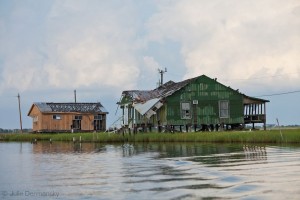 Fox told the Fort Myers Film Festival audience in April that had gathered to watch the documentary. That notwithstanding, there are no federal, state or local protocols or initiatives to plan for anticipated sea level rise in Lee, Collier or Charlotte counties.
Fox told the Fort Myers Film Festival audience in April that had gathered to watch the documentary. That notwithstanding, there are no federal, state or local protocols or initiatives to plan for anticipated sea level rise in Lee, Collier or Charlotte counties.
Posted June 27, 2016
Related Articles.
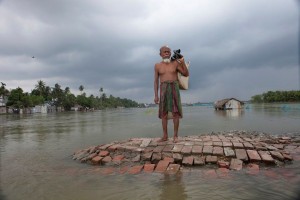 Skype Q&A with Filmmaker Josh Fox
Skype Q&A with Filmmaker Josh Fox- Five Pacific islands lost to sea level rise
- United Nations warns that rising sea levels threaten Statue of Liberty
- Josh Fox documentary airs on HBO June 27 and all summer long














 Tom Hall is both an amateur artist and aspiring novelist who writes art quest thrillers. He is in the final stages of completing his debut novel titled "Art Detective," a story that fictionalizes the discovery of the fabled billion-dollar Impressionist collection of Parisian art dealer Josse Bernheim-Jeune, thought by many to have perished during World War II when the collection's hiding place, Castle de Rastignac in southern France, was destroyed by the Wehrmacht in reprisal for attacks made by members of the Resistance operating in the area. A former tax attorney, Tom holds a bachelor's degree as well as both a juris doctorate and masters of laws in taxation from the University of Florida. Tom lives in Estero, Florida with his fiancee, Connie, and their four cats.
Tom Hall is both an amateur artist and aspiring novelist who writes art quest thrillers. He is in the final stages of completing his debut novel titled "Art Detective," a story that fictionalizes the discovery of the fabled billion-dollar Impressionist collection of Parisian art dealer Josse Bernheim-Jeune, thought by many to have perished during World War II when the collection's hiding place, Castle de Rastignac in southern France, was destroyed by the Wehrmacht in reprisal for attacks made by members of the Resistance operating in the area. A former tax attorney, Tom holds a bachelor's degree as well as both a juris doctorate and masters of laws in taxation from the University of Florida. Tom lives in Estero, Florida with his fiancee, Connie, and their four cats.